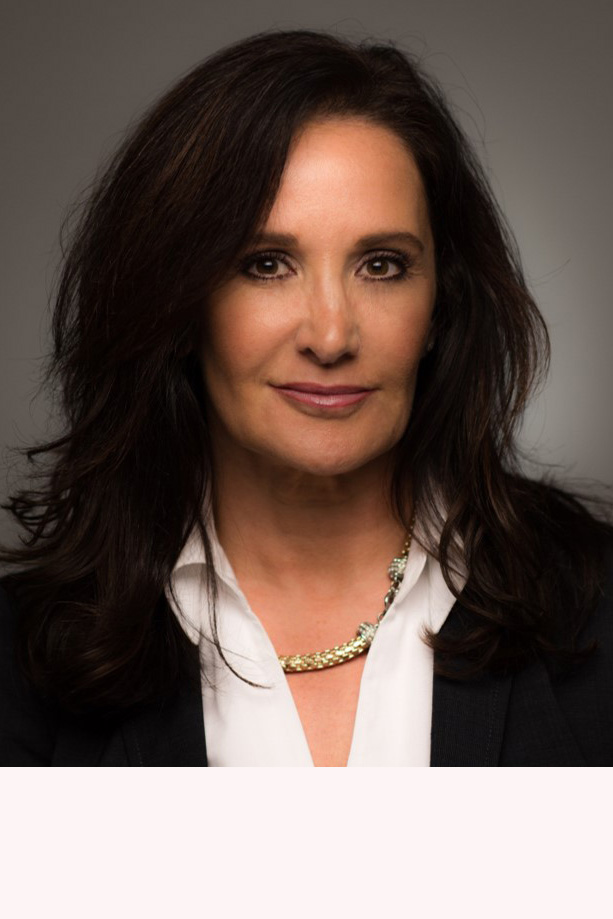How to Bring Non-DICOM Imaging into Your Enterprise Imaging Strategy
A recent conversation with a trauma surgeon revealed for me the power of non-DICOM enterprise imaging to improve or even save lives.
The surgeon recalled how a patient arrived in the emergency department after suffering what appeared to be minor head injuries in a car accident. A response team led by this physician ran the protocoled exams, found nothing especially concerning and sent the patient home.
Alarmingly, the patient returned to the ER later that same day. And this time the diagnosis was serious: intracranial aneurysm.
“This time I had access to pictures that were taken at the accident scene,” the trauma surgeon recalled. “One or two pictures showed the patient’s position in the wrecked car. Had I seen those images the first time, I would not have discharged that crash victim from the ER. I would have admitted him for, at a minimum, overnight observation.”
 Fortunately, as far as I know, the patient went on to heal with the proper treatment. Still, the surgeon’s two-part experience with a single patient clearly illustrates how important it is for examining physicians to have diagnostic context.
Fortunately, as far as I know, the patient went on to heal with the proper treatment. Still, the surgeon’s two-part experience with a single patient clearly illustrates how important it is for examining physicians to have diagnostic context.
Increasingly, non-DICOM enterprise imaging is crucial for supplying diagnostic context. That goes for elective and outpatient care as well as for emergency medicine.
I’ll go further. In a way, it’s the non-DICOM component that delivers most dramatically on EI’s founding promise: Offer a patient’s full imaging history to every permissioned clinician who might leverage the access to make a more accurate diagnosis or direct a more efficacious treatment plan.
Not everyone buys into this. Some might say that external anatomy rarely has any bearing on internal body structures.
Those few ought to widen their field of view, because solving medical mysteries based on rare occurrences is one of tech-enabled healthcare’s very reasons for being. As put by Alex Towbin, MD, chair of radiology informatics at Cincinnati Children's Hospital Medical Center and co-chair of the HIMSS-SIIM Enterprise Imaging Committee:
Non-DICOM enterprise imaging “lets me see everything that’s going on with a patient. When I can see the rash, [for example], it’s going to make me think of findings in the lung a little bit differently. It may make me, a radiologist, think about lupus when I otherwise wouldn’t have.”
Everyone’s a medical photographer now
Dr. Towbin made that statement in a 2016 interview conducted by Health Imaging. What is the state of enterprise imaging in 2021?
The answer is simple yet challenging: Today we can strategize, at an excitingly granular level, not only how to bring non-DICOM images into the EI mix but also why we should strive to do so whenever appropriate, secure and feasible.
A quick recap of the history of non-DICOM medical imaging will help frame my case.
Dermatology, wound care, ophthalmology and plastic surgery have probably been taking and archiving photos (and videos) for decades, often in quiet defiance of privacy and security strictures. Why wouldn’t they? When it comes to tracking a condition’s healing or worsening, a medical picture has always been worth a thousand clinical notes.
Then came smartphones. Ever since Apple launched the iPhone in 2007, people have gone everywhere with a high-quality camera at the ready. Healthcare has been no exception. In fact, the temptation to put amateur photography in the service of care improvement has proven irresistible. The addition of WiFi connectivity accelerated the trend, largely on the strength of image shareability within the provider’s network.
Specialties like digital pathology, endoscopy and point-of-care ultrasound are newer arrivals, but they’re not going to be left out of the EI evolution—the latter two with videos and cineloops.
The obvious concerns—data security, patient privacy, HIPAA vulnerabilities, correct patient/procedure/site—have been there from the start. But so have less publicly conspicuous issues like the lack of standardization around overall image management, proper documentation to ensure continuity of care over time and the burgeoning ability of AI to render even faceless patient photos as protected health information. Add the lack of documentation for reimbursement, and we have quite a list of concerns to address.
If the PHI worry sounds overheated, consider: We’ve seen in some recent breaches that patients can now be identified from a photo of nothing more than a mole or scar on the skin.
General principles yield specific pointers
Where are EI-invested hospitals to go from here with non-DICOM image strategies? One path to rule out is regulation. Congress, HHS and CMS are counting on providers to comply as best they can with existing HIPAA guardrails. It’s possible we’ll see formal incentives and penalties introduced at the state level but doubtful these will parse out the particulars of image acquisition, storage and sharing.
What’s more likely is that hospitals and health systems ingesting and managing non-DICOM images will continue stitching together systems that best serve their respective communities.
At the same time, some general principles apply to all provider orgs at any stage of the non-DICOM EI journey. Here are five universal must-do’s that deserve high prioritization:
1. Make sure all key stakeholders have a seat at the table. Representatives of clinical departments acquiring and consuming the content of these images are mandatory members of the non-DICOM EI steering committee (or whatever name you give this governance subgroup). But it’s also critical to have management-level people from the enterprise EHR team. These are the clinical and IT professionals who can guide decisions around where and how medical images are most securely retained and nimbly presented within the EHR.
Additionally, if your organization has someone dedicated to security and compliance, it only makes sense to get his or her ongoing input as well. You’re also going to need the perspectives and expertise of your vendors who are involved in this sphere of activity. And of course, if your overall EI program has a physician champion, his or her input is essential.
2. Understand how medical photography affects clinical workflows in your overall EI program. Mindfulness of workflow is vital because an enhanced EI environment, meaning one that includes non-DICOM content, is likely to force clinicians to do things differently. This begins with minding the meta basics—attaching patients’ identifying data to their images, to name one. Relatedly, selecting a patient off a work list needs to be intuitive and easy for your image-acquiring colleagues. Part of the simplifying might entail separating encounters-based workflows from those based on imaging orders.
Point-of-care ultrasound, aka POCUS, is an example of frequently unscheduled imaging that can seriously unsettle traditional workflows if it’s not thought through within the larger EI framework.
3. Medical photographs are much easier for patients to understand than their DICOM counterparts. Bear this in mind and approach accordingly. Research has shown that visual information of any kind is consumed seven times faster than the written word. Consequently, thanks to the growth of patient portals, many healthcare consumers are active collaborators in their imaging-based care decisions. This effect will only expand as EI becomes increasingly comprehensive.
That’s a good thing for providers and payers as well as patients. If you can use scope shots to show me how you repaired my knee during an arthroscopic intervention, I’m more likely to comply with your post-procedure instructions. I’ll heal faster and ward off hospitalization (or rehospitalization), to every stakeholder’s benefit. It’s all about having the right information in the right format at the right time for the right caregiver.
4. Get clinical departments’ buy-in early on. Those that have been DIY’ing it for years with smartphones may resist change they didn’t initiate. Often a simple reminder that their patient is in the care of the entire enterprise, not just of clinical siloes, is all it takes. On top of that, the EI program provides support they never had. What had been nervous hacks become confident fixes.
Meanwhile, ROI may not be immediately obvious—but the ramifications for reimbursement are real. In a value-based healthcare economy, CMS and private payers alike appreciate evidence of efficacy. When they can see cost-efficient care with their own eyes—in, say, wound care—they’re highly unlikely to find grounds for denying claims.
5. Collaborate closely with partners who are heading where you want to go with EI. You’ve engaged certain vendors as partners in your EI program. There’s no time like the present to leverage those relationships for the know-how these partners have gained working with multiple provider organizations.
Your most trusted vendor partners also can help ensure that you’re getting your money’s worth from investments you’ve already made in your existing EI technologies. Expanding your EI program to include non-DICOM content offers you a perfect opportunity to ask for this kind of input.
We can get there from here
I’ve been around enterprise imaging practically since its inception as a field worth developing. I don’t speak idly when I say that, in 2021, EI is absolutely at an inflection point. It started taking formal shape in 2019, when HIMSS rolled out the DIAM, its digital imaging adoption model. That milestone marked the recognition of enterprise imaging as a distinct discipline unto itself.
When you consider the growth spurt in light of the ongoing efforts of the HIMSS-SIIM Enterprise Imaging Community, it becomes inarguable that EI is in the process of pivoting toward a comprehensive, all-imaging-in model. The tools and the partners are there to help build on the momentum and nudge U.S. healthcare closer to the day when medical imaging of every type, shape, size and medium informs care in every setting.
 A few years down the road, when we look back on our present times, we’ll reflect on how photos of car crashes in trauma centers, for example, have become routine. Patients will be cared for with utmost efficiency. Optimal outcomes will be complemented by contained costs. And all of it will be the norm, not the exception. Let’s all work together to hasten that day’s arrival.
A few years down the road, when we look back on our present times, we’ll reflect on how photos of car crashes in trauma centers, for example, have become routine. Patients will be cared for with utmost efficiency. Optimal outcomes will be complemented by contained costs. And all of it will be the norm, not the exception. Let’s all work together to hasten that day’s arrival.
Kim Garriott is chief innovation officer for global healthcare & life sciences with NetApp.
